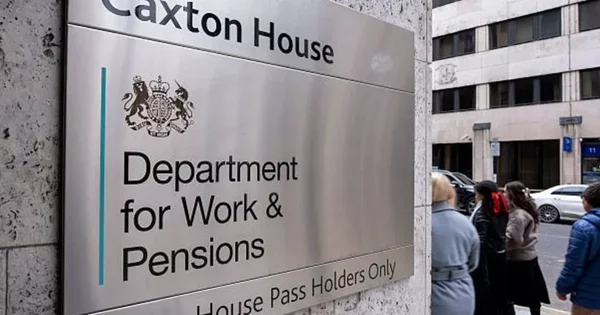Fast Facts to Know
Most UK business owners find tax admin confusing, but your UTR number is actually quite simple. The UK's first personal tax app makes tracking and using your UTR number effortless. Or if you're just here to get to grips with it all, let's break it down!
What is a company UTR number anyway?
A UTR (Unique Taxpayer Reference) is a 10-digit code that HMRC gives your business. Think of it as your company’s tax ID card.
Every limited company, sole trader and partnership in the UK has one. It stays with your business for life. Your UTR is completely different from your Companies House registration number, though they’re often confused.
HMRC automatically creates your UTR when you register your business for tax purposes. You’ll need it for nearly every tax interaction with HMRC.
Log into your HMRC Business Tax Account online where your UTR is shown on the dashboard. Through your online account, you can manage your tax affairs, file returns, and obtain necessary documents.
Without your UTR, you can’t file tax returns, claim refunds, or properly manage your company’s tax affairs. It’s that important!

Company Registration
When you register a limited company, Companies House notifies HMRC, and a Unique Taxpayer Reference (UTR) number is automatically assigned to your business. This UTR number is then sent to your company’s registered office address. It’s essential to ensure that your registered office address is up to date and accurate to receive important tax documents, including your UTR number.
Alongside the UTR, Companies House also issues a company registration number (CRN), which is used for company registration purposes. However, it’s important to note that the CRN is not the same as the UTR number. The UTR is specifically for tax purposes, while the CRN is for company registration.
Applying for a UTR
If your company was dormant and did not receive a UTR number, you can apply for one by informing HMRC that your company is now ‘active’ for corporation tax purposes. To do this, you need to register for corporation tax and provide relevant information, including your company’s name, address, and tax details. You can sign in to the HMRC registration service and select the ‘enrol for company tax’ option. Once you receive your UTR number, you can use it to manage your company’s tax affairs, including filing company tax returns and paying corporation tax. This step is crucial to ensure your company is compliant with tax regulations and avoids any penalties.

How to find your UTR when you need it
Check your corporation tax welcome letter (CT41G) from HMRC - this is the first place your UTR appears. Look through previous tax returns or statements from HMRC as your UTR will be clearly displayed.
Log into your HMRC Business Tax Account online where your UTR is shown within your account details on the dashboard. Your UTR also appears on payment reminders from HMRC and other tax correspondence.
If you still can’t find it, call HMRC’s corporation tax helpline - but be prepared for a potentially long wait.
When you'll need your company UTR
You’ll use your UTR when filing your annual company tax return - it’s the first thing HMRC asks for. Making corporation tax payments requires your UTR so HMRC can match payments to your account.
Registering for additional tax services like VAT registration or PAYE will require your company UTR. When appointing an accountant or tax agent, you’ll need to share your UTR so they can act for you. Some business bank accounts ask for your UTR during the application process as part of their checks.
Company vs personal UTRs - what's the difference?
Company directors have personal UTRs separate from their company’s UTR. Don’t mix them up! Your company UTR relates to corporation tax while your personal UTR links to self-assessment and paying income tax.
Both are 10-digit numbers but they’re completely different and should never be used interchangeably. If you’re a director filing personal tax returns, you’ll need to keep track of both UTRs.
Using the wrong UTR on tax forms can cause serious delays and complications with HMRC.

Lost your UTR or never received one?
Contact HMRC’s corporation tax helpline straight away - they can help track down your missing UTR. You can also contact HMRC directly if you haven't received your UTR after a specified period.
Be ready to answer security questions about your business to prove you’re authorised to receive the UTR. HMRC will only send replacement UTRs by post for security reasons, which takes about 10 working days.
While waiting for your UTR, you can still file your accounts with Companies House as that’s a separate system. If your company is new, your UTR should arrive within a few weeks of registration - chase it up if not.
Final Thoughts
Your company’s UTR number is the key that unlocks all your tax interactions with HMRC. It is crucial when engaging in business activities, as it ensures proper tax compliance and notification to HMRC.
Keeping it handy and knowing when to use it will make tax season much smoother for your business. New companies should expect their UTR within weeks of registering, but it’s worth following up if yours doesn’t arrive.
The right balance is keeping your UTR secure while ensuring the right people can access it when needed.

Pie: Simplifying Company UTR Number Tax
Managing your company’s UTR doesn’t have to be a headache. The UK’s first personal tax app keeps all your tax identifiers organised in one secure place. Additionally, the HMRC app offers a convenient way to manage your tax affairs, including retrieving your UTR number.
Our platform tracks your tax deadlines automatically, sending friendly reminders before HMRC submissions are due.
We’ve built direct HMRC filing into the system, so your company tax returns go straight to the right department using your UTR. The app flags potential issues early, helping you avoid those dreaded HMRC penalties for late or incorrect submissions.
Fancy seeing how it works? Pop over to our website for a quick demo of the UK’s first personal tax app in action.









